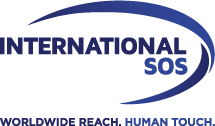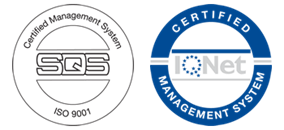HealthMap 2013 helps organisations understand and mitigate medical risks worldwide
London
International SOS announces the launch of HealthMap 2013, a tool to help organisations understand the medical risks in the markets where they operate and identify how to pre-empt health threats to their employees. HealthMap is now in its fourth year of publication.
HealthMap 2013 indicates risk by 'Low', 'Medium', 'Medium & High', 'High' and 'Extreme' categories. Medical risk ratings1 provide an overview of the threats of infectious disease, hygiene and sanitation, accidents and the availability and quality of the local health infrastructure.
Practical use of risk ratings by organisations
Risk ratings help indicate the level of preparation needed by travellers prior to departure and the degree of medical support they may need once in their destination.
"The higher the country's medical risk, the more intervention is required. Preparation includes: understanding the quality of local medical services, disease risks, vaccination requirements, food and water precautions and how to best manage your chronic conditions," says Dr Doug Quarry, Medical Director, International SOS.
Substantial number of business travellers are going to riskier destinations
International SOS' recent analysis2 of over 4.6 million travellers to 223 countries within its TravelTracker platform, a system used to help organisations track and communicate with their business travellers, reveals significant travel to destinations with more medical risk. 23% of business travellers are going to countries with 'Medium & High' risk, 'High' and 'Extreme' risk. The table below breaks down the percentage of worldwide travellers according to the medical risk level of their destination.
HealthMap 2013 shows Syria and Libya with increased health risk; French Guiana sees an improved risk rating
In HealthMap 2013, trends show in Syria and Libya that medical conditions have worsened and are extreme risk destinations due to geopolitical uprisings and instability. Knock on effects to medical supplies and infrastructure as well as food and water safety are evident.
French Guiana has seen improvements in its health infrastructure and services; it's now rated as a moderate medical risk destination. Many doctors are trained in France and Martinique, however the risk of malaria and dengue fever still persist.
BRICS include 'Medium & High' risk destinations; CIVETS see varying risk levels
The BRICs, Brazil, Russia, India and China, continue to see annual growth in business travel. Analysis of 2012 TravelTracker data shows that BRIC country travel makes up nearly 10% of all trips. BRIC countries fall into the 'Medium & High' risk category. This indicates a disparity in the medical risks and health care available between major cities and other areas. For example, selected facilities in capital cities may be of a high-standard which is not available elsewhere in the country.
This analysis also shows that Colombia, Indonesia, Vietnam, Egypt, Turkey and South Africa, also called the CIVETS, accounted for 5% of business travel in 2012. Over the past 3-years, travel to the CIVETS has increased 3% compared to G7 economies at -2.6%. The CIVETS have disparate medical risks from 'Medium' to 'High.'
Research validates that high risk countries lead to more evacuations and hospitalisations
In the Journal of Occupational and Environmental Medicine, a recent study3 indicates that expatriates living and working in a 'High' medical risk country are six times more likely to be hospitalised and more than 23 times more likely to be medically evacuated than those in a 'Low' medical risk country. The authors hypothesise that a lack of local medical capability, presence of endemic disease and hazardous work contribute to this significant increase in risk.
The study also reveals that in 'High' medical risk countries, 48% of people hospitalised for any reason will require medical evacuation. In 'Extreme' risk countries, this risk increases to 79%. As such, country medical risk ratings can be used as a tool by organisations to better implement targeted risk mitigation programmes such as pre-travel screening, focused health training and the provision of on-site medical services.
Supporting employees going to higher risk locations put additional challenges on organisations. Dr Quarry says: "'High' and 'Extreme' risk destinations compel organisations to employ comprehensive tactics to pre-empt risk. For example, pre-departure health screenings can help identify and treat conditions such cardiac or gastro-intestinal illnesses. You don't want to have a heart attack in a location with a poorly equipped hospital."
"HealthMap 2013 is a tool to help organisations identify their medical risks and prioritise their corporate health agenda to better contain human and financial costs," adds Dr Quarry.
~Ends~
Notes to Editors
About the International SOS Group of Companies The International SOS Group of Companies is in the business of saving lives, protecting your global workforce from health and security threats. Wherever you are, we deliver customised health, security risk management and wellbeing solutions to fuel your growth and productivity. In the event of extreme weather, an epidemic or a security incident, we provide an immediate response providing peace of mind. Our innovative technology and medical and security expertise focus on prevention, offering real-time, actionable insights and on-the-ground quality delivery. We help protect your people, your organisation's reputation, as well as support your compliance reporting needs. By partnering with us, organisations can fulfil their Duty of Care responsibilities, while empowering business resilience, continuity and sustainability. Founded in 1985, the International SOS Group, headquartered in London & Singapore, is trusted by 12,000 organisations, including the majority of the Fortune 500, as well as mid-size enterprises, governments, educational institutions and NGOs. 12,000 multicultural medical, security and logistics experts stand with you to provide support & assistance from over 1,000 locations in 90 countries, 24/7, 365 days.
To protect your workforce, we are at your fingertips: www.internationalsos.com
1] International SOS constantly evaluates and calibrates medical risk levels using a number of factors: Infectious disease threats, analysis of global health infrastructure, evacuations and medical case data from millions of members who work and travel in over 200 countries worldwide.
The evaluation of the medical risk in each country is based on factors including: the standard of local medical and dental care available, access to prescription drugs, the presence of serious infectious diseases and cultural, language or administrative barriers. Countries are assigned a risk category from 'Low' to 'Medium', 'Medium & High' (previously called 'Variable'), 'High' to 'Extreme'.
2] Taken from a dataset of 4.6 million travellers going to international destinations in TravelTracker in 2009-2012. TravelTracker is used by over 700 of International SOS' multinational clients with each client typically having thousands of travelling employees.
3] Journal of Occupational and Environmental Medicine, "Country Factors Associated With the Risk of Hospitalization and Aeromedical Evacuation Among Expatriate Workers," 09/2012, Druckman, Myles MD; Harber, Philip MD, MPH; Liu, Yihang MD, MS, MA; Quigley, Robert L. MD, D Phil.










